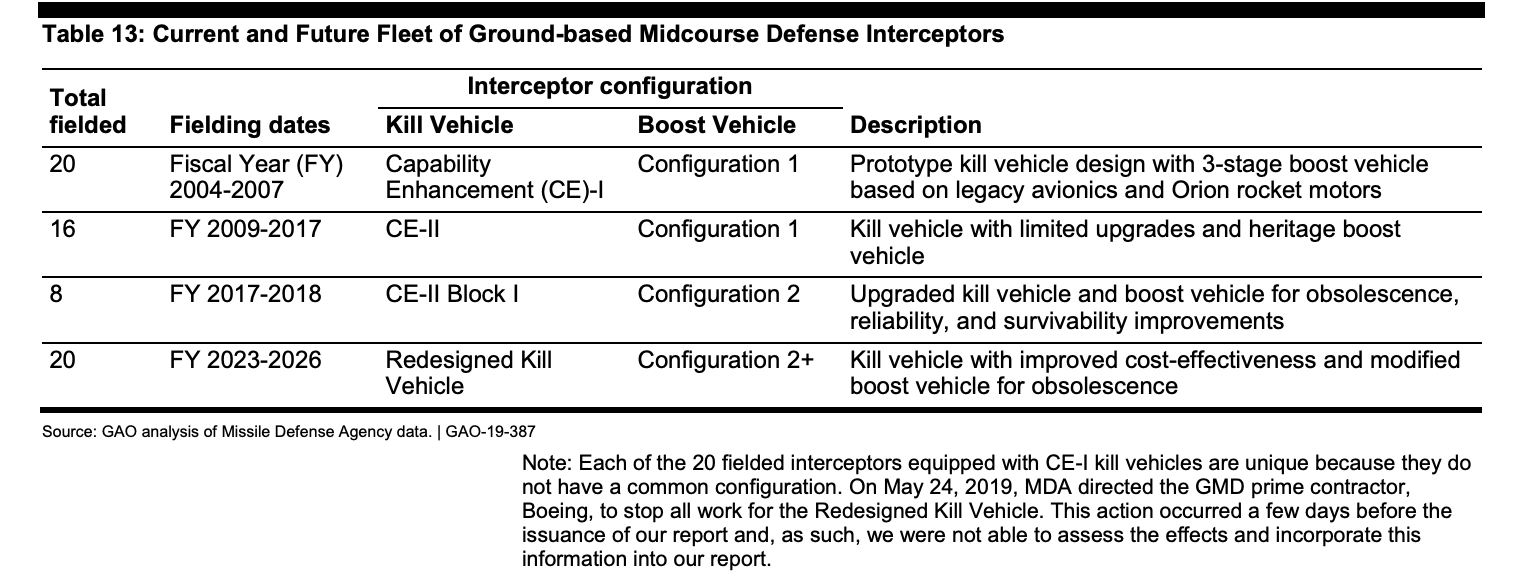
Damning new report chronicles missile defense slip-ups
Since 2012, Congress has required that the Government Accountability Office (GAO) provide an annual assessment of the Missile Defense Agency’s activities. Previous reports haven’t been particularly encouraging of the MDA’s progress, but this year’s report, which was released last week, was especially incriminating.
Noting that the “MDA did not meet its planned goals,” the report states that the MDA only completed 65-70% of its planned deliveries and tests for FY18, chalking it up to “failures, cancellations, and delays.”
The two most troubling sections of the report were the appendices which respectively describe the setbacks of the Aegis Ashore missile defense infrastructure in Europe, intended for regional threats like North Korea and Iran, and the Ground-based Midcourse Defense (GMD) system, intended for homeland protection of the United States.
Last year, the Polish Ministry of Defense announced that the completion of the planned Aegis Ashore site at Redzikowo would be pushed back by two years, to May 2020. The announcement came amid rumors of poor contractor performance, but details were otherwise scarce. The GAO report finally offers more of an explanation, noting that the construction team “has failed to meet schedule milestones from the start of the contract.” In particular, “MDA has found the contractor’s performance is still particularly poor in the areas of construction management, identification, procurement, timely delivery of important materials, and timely hiring of staff with appropriate skills.” According to the MDA, these delays will require at least an additional $90 million of taxpayer money.
Performance and technical failures with the interceptors themselves have caused additional delays. Technical issues with the SM-3 Block IB’s throttleable divert and attitude control system forced the program to suspend its deliveries, thereby missing most of its FY18 delivery targets. Similarly, when the SM-3 Block IIA failed a crucial intercept test (FTM-29) in January 2018, its subsequent testing schedule was subject to disruption and delay.
The most damning section, however, describes the setbacks of the Ground-based Midcourse Defense program. The report notes the program’s poor testing record (“less than 50 percent operational realism”), and for the first time provides a distribution breakdown of the different types of kill vehicles.
Nearly half (20/44) of the currently deployed GMD interceptors are fitted with the Capability Enhancement (CE)-I kill vehicle, which has only succeeded in two of its four interceptor tests (the most recent of which took place in 2008). Similarly, over a third of the interceptors are fitted with the CE-II kill vehicle, which also has a 50% testing record. In last year’s report, the GAO noted that the MDA intended to replace the unreliable CE-Is as soon as possible by expediting the Redesigned Kill Vehicle (RKV) program. However, this year’s GAO report suggests that the RKV program was accelerated too quickly because of “advancements in the North Korea missile threat.” As a result, “the program accepted too much risk,” causing significant technical delays and costing taxpayers an additional $600 million before eventually being cancelled on May 24th.
Although the MDA’s cancellation of such an expensive and technically deficient program is certainly welcomed, it leaves the GMD program in quite a mess. GMD interceptors only have an initial service life of 20 years, which the twenty currently-deployed CE-Is will reach in the mid-2020s. With nothing scheduled to replace them, the GMD program will lose nearly half of its deployed interceptor arsenal in just over five years. However, given the wasteful, destabilizing, and disastrous nature of the GMD program on the whole, this probably isn’t such a bad thing.
One line in the GAO report serves as a particularly brilliant––and somewhat passive-aggressive––indictment of the entire GMD program: “Our prior work has shown that stabilizing system design before making major production commitments and relying on knowledge rather than deadlines to make acquisition decisions at key milestones are best practices of successful product developers.”
Ouch.
This publication was made possible by generous contributions from the Carnegie Corporation of New York, the John D. and Catherine T. MacArthur Foundation, the New Land Foundation, the Ploughshares Fund, and the Prospect Hill Foundation. The statements made and views expressed are solely the responsibility of the authors.
Satellite imagery has long served as a tool for observing on-the-ground activity worldwide, and offers especially valuable insights into the operation, development, and physical features related to nuclear technology.
This report outlines a framework relying on “Cooperative Technical Means” for effective arms control verification based on remote sensing, avoiding on-site inspections but maintaining a level of transparency that allows for immediate detection of changes in nuclear posture or a significant build-up above agreed limits.
The grant comes from the Carnegie Corporation of New York (CCNY) to investigate, alongside The British American Security Information Council (BASIC), the associated impact on nuclear stability.
Satellite imagery of RAF Lakenheath reveals new construction of a security perimeter around ten protective aircraft shelters in the designated nuclear area, the latest measure in a series of upgrades as the base prepares for the ability to store U.S. nuclear weapons.
